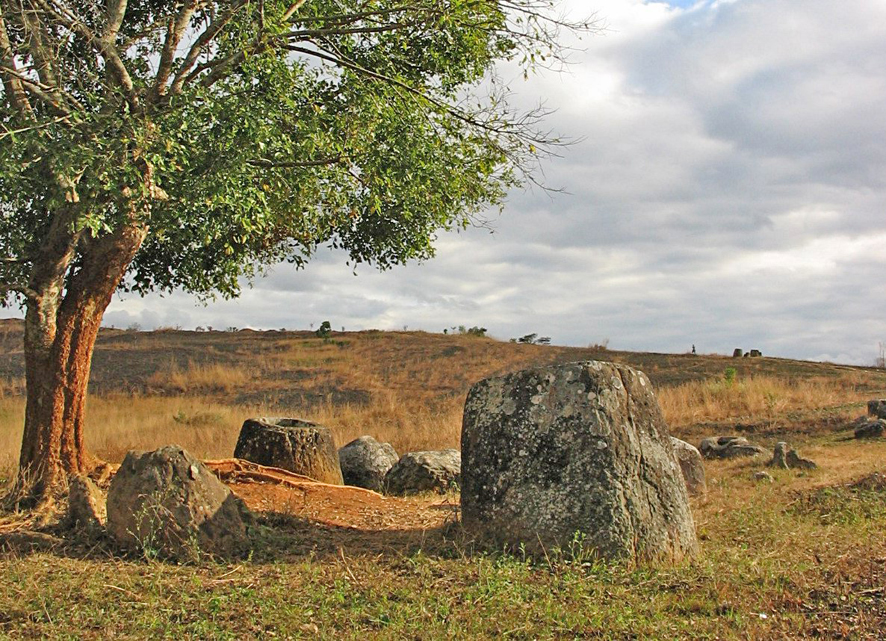The plain of the stone jugs is located in the province of Xieng Khouang in Laos nearby the provincial capital Phonsavan.
There are over 2,100 tubular megalithic jugs made of sandstone, from half a meter to three meters in size.The majority of the jugs are located on the three Large Storage Sites, Sites 1, 2, 3. Site 1 alone has more than 250 of these large stone jars.
These pots were made from granite, sandstone, rocks and calcined coral. Scientists suggest that the age of the stone bowls is 1500-2000 years.
In 2019 the area was declared a UNESCO World Heritage Site.
Contents
The plain of the stone jugs is located in the province of Xieng Khouang in Laos nearby the provincial capital Phonsavan.Since Xieng Khouang Province was massively bombed by the American Air Force during the Lao Civil War in the 1960s and 1970s, many of the deposits are still inaccessible today. Only at sites 1, 2 and 3 were most of the bombs cleared. The accessible areas are marked there.
safety
As in the entire province of Xieng Khouang, there is also a risk of mines in the plains of the clay jugs outside the marked paths. Corresponding signs and floor markings must be observed!
Access : Coordinates:19.43, 103.153 / The Xiangkhouang Plateau , also known in French as Plateau du Tran-Ninh is a plateau in the north of Laos.
Highlights :
- The jars are arranged in groups, with no visible alignment. They come in different sizes, from one to three meters in height, measuring up to nearly eight meters in circumference, weighing from 500 kg to several tons for the largest . They were carved from blocks of monolithic rocks from the region: sandstone limestone, and sometimes granite. They are sometimes half buried. There is also sometimes, near some of them, a stone disc that could have served as a cover. Their shape is quite simple, often cylindrical, more rarely angular; the jars have no decoration or inscription. No other architectural vestige or ancient habitat is present in the region, leaving the jars without archaeological context.
- Archaeologists believe that these stone vessels were created 1500 or 2000 years ago by the ancient inhabitants of the region, whose culture and way of life is unknown.
- Local legends speak of a race of giants whose king, Khun Cheung, was a great warrior who, after a singular combat, managed to win an important battle, and to commemorate it he had thousands of huge stone jars made to store large quantities of Lao Lao (liquor of rice typical of Laos), with which to invite his vassals in the interminable feasts. But, at the moment the use of the vessels is unknown.
- More than 400 locations have been found throughout the entire Laotian plain in the Xieng Khouang area, from the Khorat plateaus in northern Thailand, across Laos to the Cachar plains in northern India, where Similar burials have been found.
Since Xieng Khouang Province was massively bombed by the American Air Force during the Lao Civil War in the 1960s and 1970s, many of the deposits are still inaccessible today. Only at sites 1, 2 and 3 were most of the bombs cleared. The accessible areas are marked there.
safety
As in the entire province of Xieng Khouang, there is also a risk of mines in the plains of the clay jugs outside the marked paths. Corresponding signs and floor markings must be observed!
safety
As in the entire province of Xieng Khouang, there is also a risk of mines in the plains of the clay jugs outside the marked paths. Corresponding signs and floor markings must be observed!
Go next : the city of Phonsavan, the capital of Xieng Khouang Province in Central Laos./ Luang Prabang.

